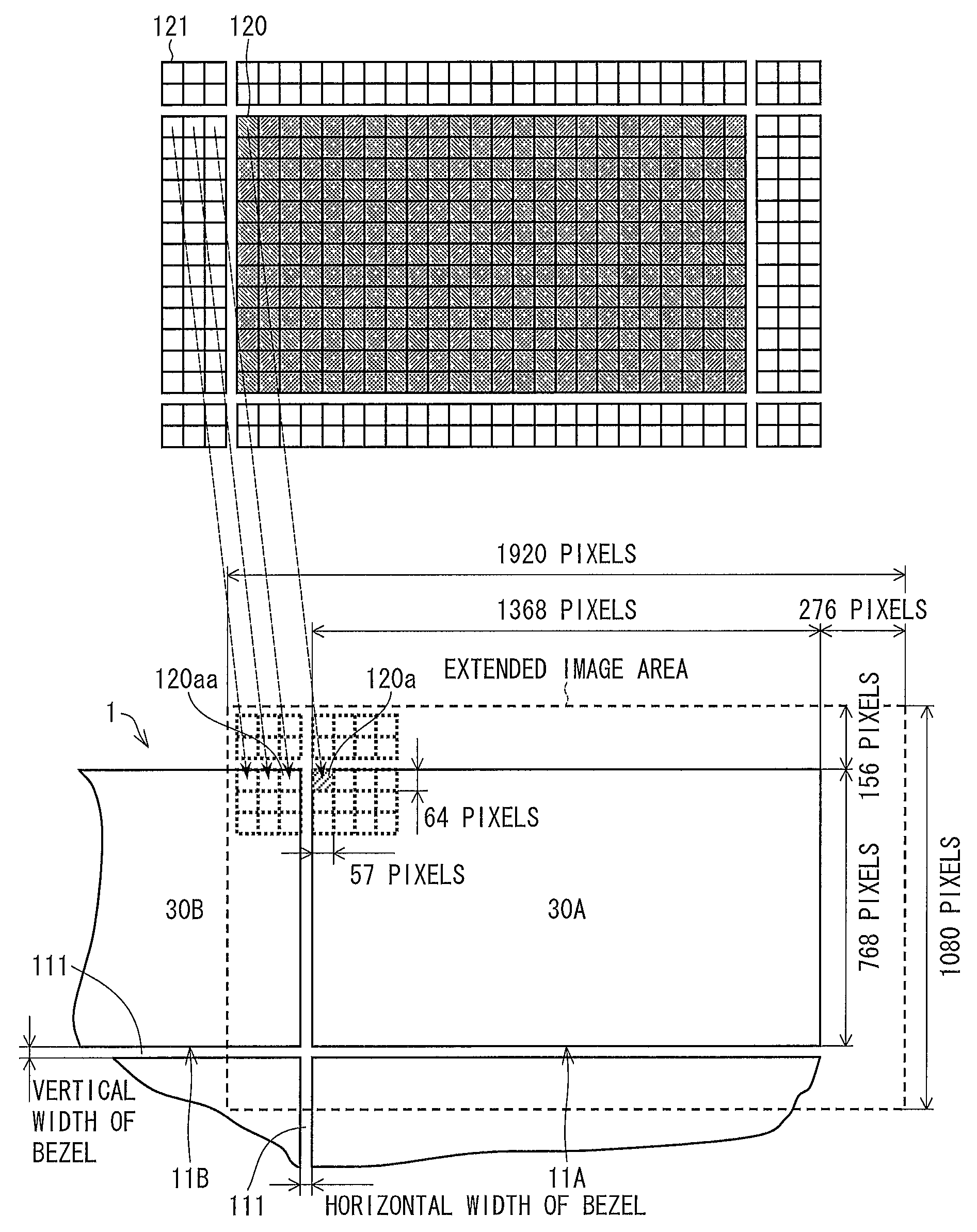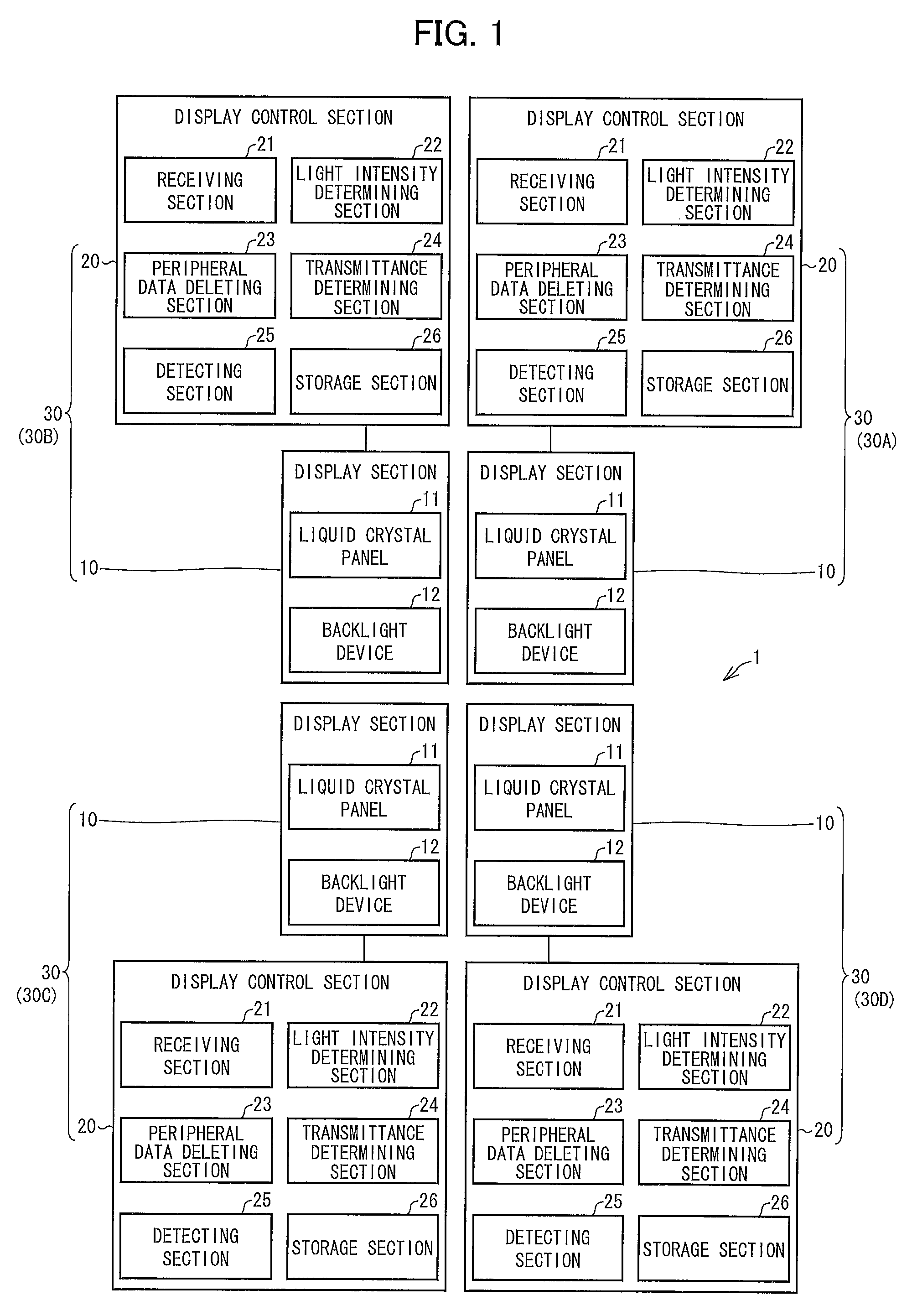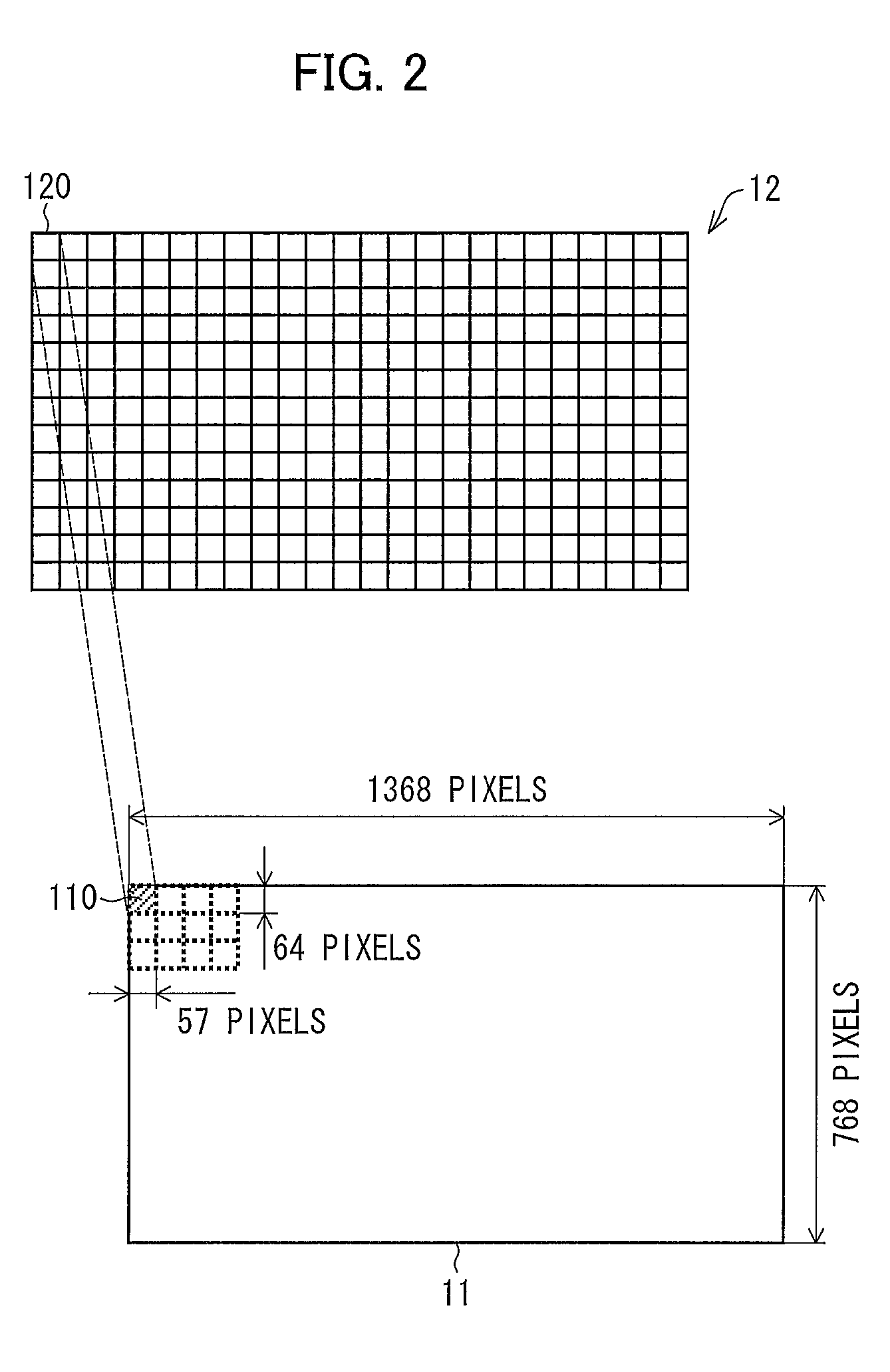Liquid crystal display device, multi-display device, method for determining light intensity, and storage medium
a display device and liquid crystal technology, applied in static indicating devices, cathode-ray tube indicators, instruments, etc., can solve the problems of unnaturally appearing images displayed, liquid crystal display devices which employ local dimming, etc., to reduce risks, increase average electric power consumption, and large brightness differences
- Summary
- Abstract
- Description
- Claims
- Application Information
AI Technical Summary
Benefits of technology
Problems solved by technology
Method used
Image
Examples
Embodiment Construction
[0039]The following description will discuss a configuration of a multi-display device of the present embodiment and processes carried out in the multi-display device, with reference to FIGS. 1 through 14.
[0040](Configurations of Liquid Crystal Display Device and Multi-display Device)
[0041]A multi-display device 1 of the present embodiment includes four liquid crystal display devices 30 (see FIG. 1). The four liquid crystal display devices 30 include respective liquid crystal panels 11, and the liquid crystal panels 11 are arranged in a matrix of 2×2 in the multi-display device 1. Note that the number of the liquid crystal display devices 30 is not limited to four, and therefore the present embodiment is suitably applicable to a multi-display device 1 including at least two liquid crystal display devices 30.
[0042]In the descriptions below, in a case where the four liquid crystal display devices 30 are distinguishingly referred to, symbols “30A”, “30B”, “30C”, and “30D” are given to ...
PUM
 Login to View More
Login to View More Abstract
Description
Claims
Application Information
 Login to View More
Login to View More - R&D
- Intellectual Property
- Life Sciences
- Materials
- Tech Scout
- Unparalleled Data Quality
- Higher Quality Content
- 60% Fewer Hallucinations
Browse by: Latest US Patents, China's latest patents, Technical Efficacy Thesaurus, Application Domain, Technology Topic, Popular Technical Reports.
© 2025 PatSnap. All rights reserved.Legal|Privacy policy|Modern Slavery Act Transparency Statement|Sitemap|About US| Contact US: help@patsnap.com



